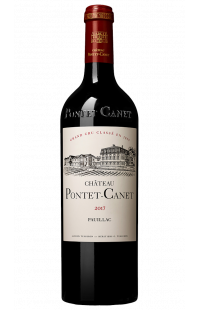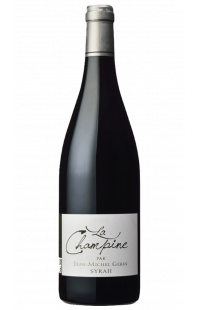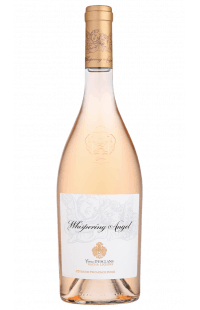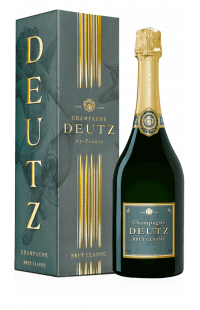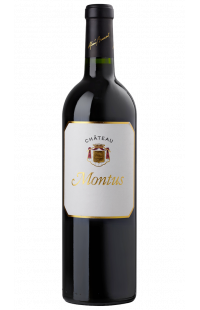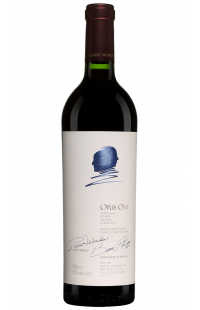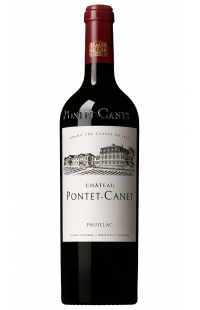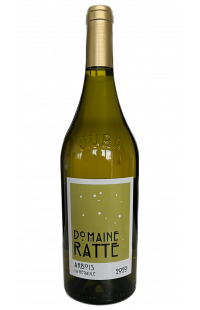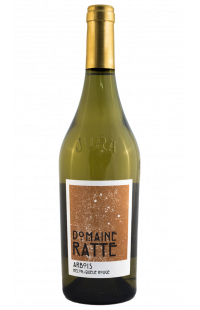- Menu
- All our wines
- Bordeaux
-
Rhône
-
Burgundy
-
Rosés Wines
-
Champagne
- France
-
World
- PRIMEURS
- ORGANIC WINES
Jura Wines
The Wines of the Jura: A Journey to the Heart of a Unique Terroir
Introduction to Jura Wines
The Jura, a small wine region located in eastern France between Burgundy and Switzerland, is renowned for its distinctive wines and rich winemaking heritage. Although less well-known than some of France's major wine regions, the Jura offers a diversity and quality of wines that captivate enthusiasts and connoisseurs alike. Jura winemakers, through ancestral know-how and a unique terroir, produce wines that reflect the authenticity and character of their region.
The Terroirs of the Jura
L'Étoile
L'Étoile is a small appellation located in the heart of the Jura, known for its limestone soils rich in marine fossils. This unique terroir contributes to the minerality and finesse of the wines produced. The main grape varieties of L'Étoile are Chardonnay and Savagnin, used to produce dry white wines as well as the famous Vin Jaune, aged under a layer of yeast.
Arbois
Arbois is one of the most renowned appellations of the Jura. Located on varied soils of blue, red, and gray marl, this region produces a great diversity of wines, ranging from powerful and spicy reds to elegant and complex whites. The grape varieties Trousseau and Poulsard are characteristic of Arbois red wines, while Chardonnay and Savagnin dominate the whites.
Château-Chalon
Château-Chalon is an appellation dedicated exclusively to the production of Vin Jaune, an emblematic wine of the Jura. Located on marly soils and exposed to specific climatic influences, this terroir allows the Savagnin grape to develop unique aromas and structure. The Vin Jaune of Château-Chalon is aged under a yeast veil for at least six years and three months, developing notes of walnut, curry, and spices.
Côtes du Jura
The Côtes du Jura cover a vast region that encompasses various types of soils and microclimates, allowing the production of all Jura wine styles: reds, whites, rosés, Vin de Paille, and Vin Jaune. The vineyards of the Côtes du Jura are mainly planted with Chardonnay, Savagnin, Poulsard, Trousseau, and Pinot Noir. The diversity of soils and exposures gives rise to wines with varied and expressive profiles.
The Appellations of the Jura
Regional Appellations
The regional appellations of the Jura represent the entry level of the region's wines. They cover large geographical areas and can be produced in several sub-regions. Among them are:
- Côtes du Jura: This appellation encompasses a wide variety of wine styles, from dry whites to light reds, including Vin de Paille and Vin Jaune.
- Crémant du Jura: A sparkling wine produced according to the traditional method, from grape varieties such as Chardonnay, Pinot Noir, Trousseau, and Poulsard. Crémants du Jura are renowned for their finesse and freshness.
Village Appellations
The village or communal appellations represent a higher quality level, originating from specific vineyards. Each village has its own character and wine style. Among the best known are:
- Arbois: Famous for its spicy red wines and complex white wines, as well as Vin de Paille and Vin Jaune.
- L'Étoile: Renowned for its dry and mineral white wines, often produced from Chardonnay and Savagnin.
- Château-Chalon: Renowned for its Vin Jaune, made exclusively from the Savagnin grape.
The Wines of the Jura: An Overview of Styles
White Wines
Jura white wines, mainly produced from Chardonnay and Savagnin grape varieties, are distinguished by their unique character and ability to express the terroir. Chardonnay wines are often mineral and lively, with aromas of white-fleshed fruits, flowers, and sometimes hazelnut. Savagnin, on the other hand, is the emblematic grape of Vin Jaune and typical Jura dry white wines, developing powerful aromas of walnut, curry, and spices after aging under a veil.
Red Wines
Jura red wines are mainly made from the grape varieties Trousseau, Poulsard, and Pinot Noir. Trousseau produces structured and spicy wines, with aromas of red and black fruits. Poulsard yields lighter and fruity wines, with notes of cherry and strawberry. Pinot Noir, although less widespread than in other French wine regions, produces elegant and refined wines marked by red fruit aromas and beautiful freshness.
Vin de Paille
Vin de Paille (Straw Wine) is a sweet wine produced from grapes dried on straw mats or racks to concentrate sugars and aromas. The grape varieties used for these wines are generally Chardonnay, Savagnin, Poulsard, and Trousseau. Jura Vin de Paille is characterized by its richness, complexity, and aromas of candied fruits, honey, and spices.
Vin Jaune
Vin Jaune (Yellow Wine) is the jewel of the Jura, made exclusively from the Savagnin grape. After a classic fermentation, the wine is aged under a veil of yeast for at least six years and three months, without topping up the barrels. This unique process gives Vin Jaune its characteristic aromas of walnut, curry, dried fruits, and spices. Vin Jaune is often bottled in clavelins, specific 62 cl bottles, and can age for several decades.
The Grape Varieties of the Jura
Chardonnay
Chardonnay is the most widely planted white grape variety in the Jura. It adapts perfectly to the different soil types of the region, producing fresh and mineral or rich and complex wines, depending on the terroir and winemaking techniques used. Jura Chardonnay wines are renowned for their elegance, purity, and ability to reflect the nuances of the terroir.
Savagnin
Savagnin is the emblematic grape variety of the Jura, mainly used to produce the famous Vin Jaune. This white grape develops powerful and complex aromas after aging under a veil, with notes of walnut, curry, and spices. Savagnin is also used to produce dry white wines, often blended with Chardonnay.
Poulsard
Poulsard is an indigenous red grape variety of the Jura, also called Ploussard in some villages. It gives light and fruity wines, with aromas of cherry, strawberry, and sometimes undergrowth. Poulsard is often used to produce red and rosé wines, as well as in the making of some Vin de Paille.
Trousseau
Trousseau is another typical red grape variety of the Jura, producing wines more structured and spicy than those from Poulsard. Trousseau wines are often marked by aromas of red and black fruits, pepper, and spices. This grape is particularly well-suited to the red and gray marl soils of the Jura.
Pinot Noir
Pinot Noir, although less prevalent in the Jura than in neighboring Burgundy, produces elegant and refined red wines. Jura Pinot Noir wines are characterized by their freshness, red fruit aromas, and a beautiful tannic structure. This grape is often blended with Trousseau and Poulsard to create complex and balanced wines.
Winemaking in the Jura
Vinification of White Wines
The vinification of white wines in the Jura follows traditional methods that emphasize the expression of the terroir and the quality of the grapes. Chardonnay and Savagnin grapes are often gently pressed to obtain high-quality must. Fermentation usually takes place in oak barrels or stainless steel tanks, with aging on lees that can last from 6 to 18 months, depending on the desired wine style. Bâtonnage (stirring of the lees) is sometimes practiced to enrich the wine and add complexity.
Vinification of Red Wines
The vinification of red wines in the Jura also follows traditional techniques, with particular attention paid to the quality of the grapes and the extraction of aromas and tannins. Trousseau, Poulsard, and Pinot Noir grapes are hand-harvested and carefully sorted. Fermentation generally takes place in open vats, with regular punch-downs to promote the extraction of phenolic compounds. The wines are then aged in oak barrels or stainless steel tanks for a period of 12 to 24 months, depending on the grape variety and wine style.
Vinification of Vin de Paille
The production of Vin de Paille begins with the selection of perfectly ripe grape clusters, often of Chardonnay, Savagnin, Poulsard, or Trousseau. The grapes are then dried on straw mats or racks for several weeks to concentrate sugars and aromas. After pressing, the must ferments slowly and is aged in barrels for several years. Jura Vin de Paille is rich, complex, and can age for several decades.
Vinification of Vin Jaune
The vinification of Vin Jaune is unique and follows strict rules to guarantee the quality and authenticity of this emblematic Jura wine. After classic fermentation, the wine is transferred to oak barrels and aged under a veil of yeast for at least six years and three months. During this period, the wine develops complex aromas of walnut, curry, and spices. Vin Jaune is then bottled in clavelins, specific 62 cl bottles.
The Vintages of the Jura
Jura wines are influenced by annual climatic variations, making each vintage unique. Weather conditions, such as the amount of sunshine, rainfall, and temperature, affect the ripeness of the grapes and the quality of the wine produced. Some vintages are particularly renowned for their exceptional quality, while others may be more delicate. Wine enthusiasts and collectors closely follow vintages to determine which are the most promising for aging and consumption.
Conclusion: Jura Wines, a Living Heritage
The viticultural Jura is a living heritage, where each bottle tells a story of terroir, tradition, and passion. Jura wines are prized for their ability to express the finest nuances of their environment, making each tasting a unique experience. Whether it's a prestigious Vin Jaune, a rich and complex Vin de Paille, or a spicy red wine, each Jura wine is the fruit of know-how passed down from generation to generation, reflecting a region where viticulture is a true art of living. Jura winemakers, attached to their terroir and traditions, continue to produce wines that captivate enthusiasts around the world, thus perpetuating the living heritage of viticultural Jura.
